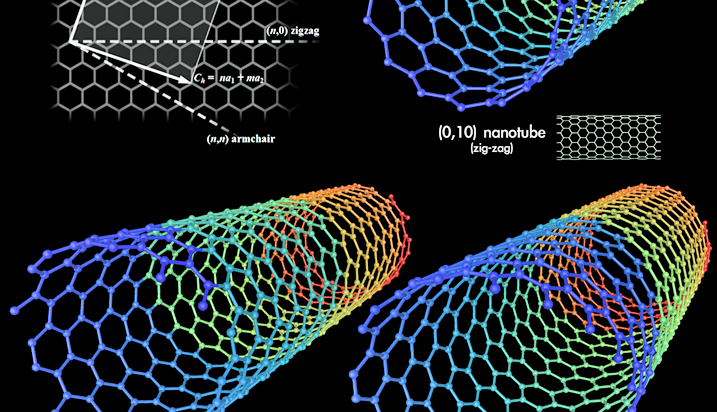Long-fibre carbon nanotubes shown to be carcinogenic
November 22, 2017
on
on

Nanotechnology plays an indispensable role in modern materials research and new products. Carbon nanotubes (CNTs) enable production of novel materials with amazing properties. Progress is however not without risk and a recent study on mice has shown that certain types of CNTs have similar carcinogenic properties as asbestos fibers.
So far there is no evidence of risk to human exposure, but caution is required, plural mesothelioma is a notoriously slow-developing but fatal condition. Long-fiber CNTs seem to be the culprit, they are structurally not dissimilar to asbestos fibers, but have interesting properties allowing lightweight industrial materials to be produced which possess incredible strength. This material is used not only in aircraft construction, but also for automotive and bicycle design and even for protective helmets. The world of electronics is also affected because it is already used for specialist PCBs and special electronic components.
According to Prof. Marion MacFarlane of the Medical Research Council (MRC) Toxicology Unit in Leicester, UK, the toxic effects of thin and long CNTs that lead to mesotheliomas in organisms has been clearly demonstrated for the first time. As it turned out, this does not apply to all types of CNTs, only long-fiber CNTs. To be safe it is important for manufacturers to be more specific about the type of carbon nanotubes used in their products.
In the animal experiments, the CNTs introduced into the pleural cavity of mice resulted in the development and marked progression of inflammatory lesions along the pleura. This is the place where mesotheliomas arise in humans. The resulting changes were then studied over months, through the different stages of inflammation, including genetic errors and carcinogenesis. As it turned out, the danger is mainly caused by long, thin CNTs that resemble asbestos fibers in terms of dimensions. Thicker, shorter or lumped nanotubes, however, were well recognized by the immune system and eliminated by macrophages.
Results of the study are published in the scientific journal Current Biology with the title Long-Fiber Carbon Nanotubes Replicate Asbestos-Induced Mesothelioma with Disruption of the Tumor Suppressor Gene Cdkn2a (Ink4a/Arf)
So far there is no evidence of risk to human exposure, but caution is required, plural mesothelioma is a notoriously slow-developing but fatal condition. Long-fiber CNTs seem to be the culprit, they are structurally not dissimilar to asbestos fibers, but have interesting properties allowing lightweight industrial materials to be produced which possess incredible strength. This material is used not only in aircraft construction, but also for automotive and bicycle design and even for protective helmets. The world of electronics is also affected because it is already used for specialist PCBs and special electronic components.
According to Prof. Marion MacFarlane of the Medical Research Council (MRC) Toxicology Unit in Leicester, UK, the toxic effects of thin and long CNTs that lead to mesotheliomas in organisms has been clearly demonstrated for the first time. As it turned out, this does not apply to all types of CNTs, only long-fiber CNTs. To be safe it is important for manufacturers to be more specific about the type of carbon nanotubes used in their products.
In the animal experiments, the CNTs introduced into the pleural cavity of mice resulted in the development and marked progression of inflammatory lesions along the pleura. This is the place where mesotheliomas arise in humans. The resulting changes were then studied over months, through the different stages of inflammation, including genetic errors and carcinogenesis. As it turned out, the danger is mainly caused by long, thin CNTs that resemble asbestos fibers in terms of dimensions. Thicker, shorter or lumped nanotubes, however, were well recognized by the immune system and eliminated by macrophages.
Results of the study are published in the scientific journal Current Biology with the title Long-Fiber Carbon Nanotubes Replicate Asbestos-Induced Mesothelioma with Disruption of the Tumor Suppressor Gene Cdkn2a (Ink4a/Arf)
Read full article
Hide full article


Discussion (0 comments)